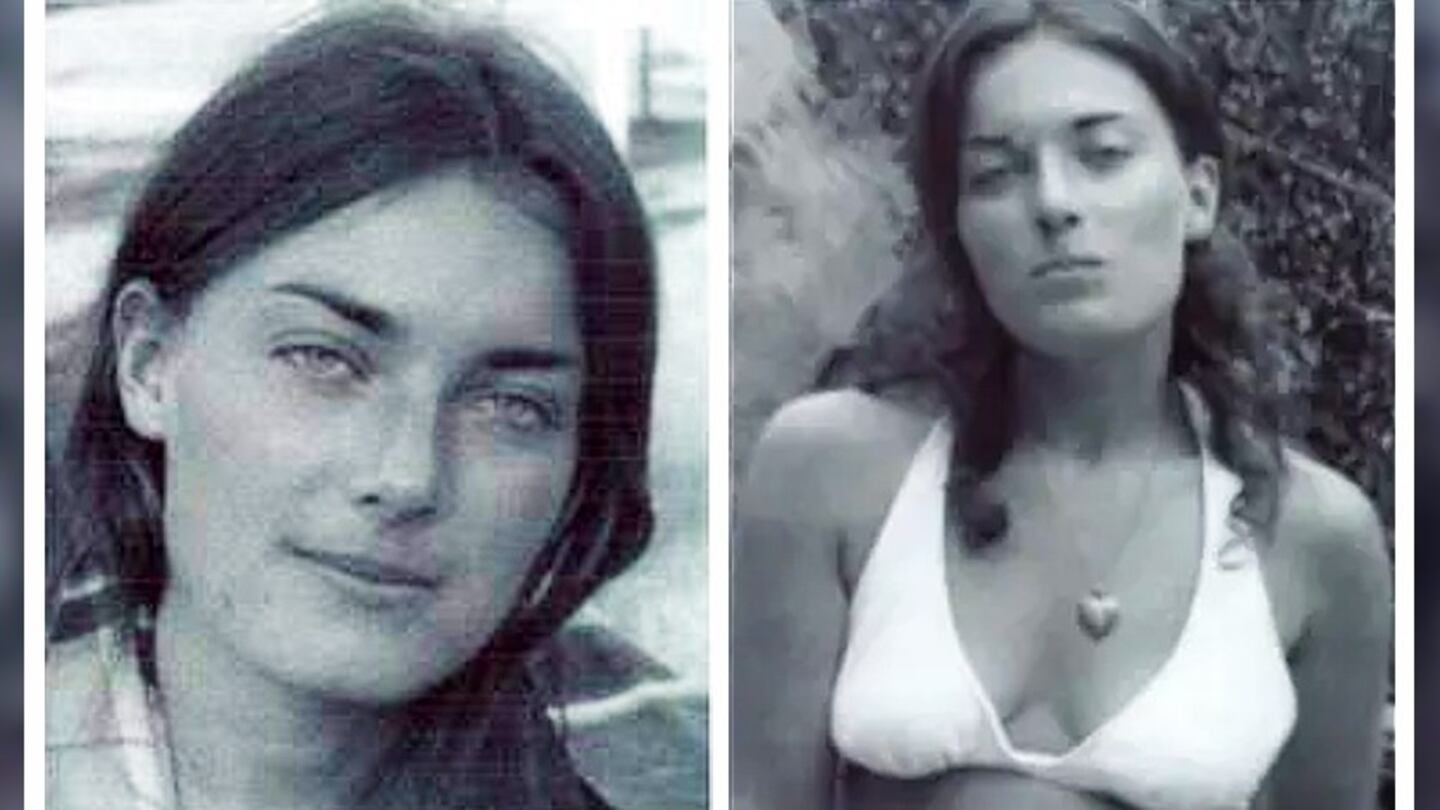PROVINCETOWN, Mass. — Federal agents working with genetic genealogists have solved the 48-year-old mystery of an unidentified woman found beaten and mutilated on a Massachusetts beach in 1974.
“The Lady of the Dunes” has been identified as Ruth Marie Terry, 37, of Tennessee, authorities announced on Monday. According to the FBI, Terry’s was the oldest case of an unidentified homicide victim in Massachusetts.
“This is, without a doubt, a major break in the investigation that will, hopefully, bring all of us closer to identifying her killer,” said Joseph Bonavolonta, special agent in charge of the FBI’s Boston field office. “Earlier this morning, FBI special agents and victim specialists, along with troopers from the Massachusetts State Police delivered the news to the victim’s family.”
Bonavolonta asked that the family be given privacy to grieve.
The long-unsolved case began on July 26, 1974, when a 13-year-old girl walking her dog along Race Point Beach at the Cape Cod National Seashore stumbled upon a gruesome sight.
Among the dunes, in a patch of scrub pine a mile east of the Race Point ranger station, was the naked, decomposing body of a woman. She was lying face down on a beach blanket, with her Wrangler jeans folded neatly and placed under her head like a pillow.
The woman, who had been dead for at least a week, had a large hole in her left temple where her skull had been crushed by a blunt object, FBI officials said. The killer had removed the woman’s hands, presumably so she could not be identified through fingerprints.
Her head was nearly severed from her body. According to Provincetown officials, the cutting weapon, which was never found, was believed to be a military entrenching tool or something similar.
After nearly a half-century, #FBI Boston's use of Investigative Genealogy has identified the 'Lady of the Dunes,' the oldest, unidentified homicide victim in MA. She is Ruth Marie Terry of Tennessee. Learn more: https://t.co/2l1qlGB4HM pic.twitter.com/W28xmSiZbA
— FBI Boston (@FBIBoston) October 31, 2022
“It was a brutal death, and for the last 48 years, investigators with the Massachusetts State Police and Provincetown Police Department have worked tirelessly to identify her through various means, including neighborhood canvasses; reviews of thousands of missing persons cases; clay model facial reconstruction, and age-regression drawings,” Bonavolonta said.
Authorities released the little information they had on the woman. She was estimated to be between 25 and 35 years old, was about 5 feet, 6 inches in height, weighed about 140 pounds and had long, reddish blonde hair pulled back into a ponytail.
One important clue was the woman’s expensive dental work, according to police. The woman had more than $5,000 worth of work, including multiple gold crowns. Detectives sent her dental records to thousands of dentists in Massachusetts and beyond.
The search for the woman’s identity proved fruitless, as did the search for her killer or killers. Investigators found footprints and tire tracks leading away from the crime scene, but loose sand and passage of several days made them of little investigative value.
Three months after she was found, the still-unidentified woman was buried in Saint Peter the Apostle Cemetery in Provincetown.
News reports over the decades show the level of work that has gone into identifying the Lady of the Dunes. Her body was exhumed twice, the first time just six years after her murder.
She was exhumed again in 2000 to get additional DNA from her remains.
There have been multiple theories regarding the woman’s identity. In 2015, author Joe Hill, the son of horror maven Stephen King, was watching the movie “Jaws” when he spotted an extra in a crowd scene who he believed greatly resembled composite images of the “Lady of the Dunes.”
“Jaws” was filming on Martha’s Vinyard the summer the woman’s body was found.
“It’s a pretty wild bit of speculation,” Hill told VICE News. “But it’s also kind of interesting. There is this woman who died on Cape Cod, and there is this figure who can be seen briefly in the movie who matches the reconstruction… Was she in the right place at the right time? Or the wrong place at the wrong time, depending on how you look at it.”
For several years, detectives theorized that the woman could be Rory Gene Kesinger, a 25-year-old drug smuggler and gun runner who escaped from the Plymouth County Correctional Facility in 1973 as she was set to stand trial for attempting to shoot a police officer.
Comparisons of the unidentified woman’s DNA with that of Kesinger’s mother later proved them wrong.
The woman’s DNA did prove key to identifying her, however. As technology advanced, authorities tried multiple times to determine who the Lady of the Dunes really was.
Earlier this year, cold case investigators turned to Othram Inc., a Texas-based forensic company that specializes in genetic genealogy.
Honored to assist the Boston FBI, Massachusetts State Police, Provincetown PD, and the Cape and Islands District Attorney's Office in Identifying the Lady of the Dunes. She is 37-year-old Ruth Marie Terry.https://t.co/CBNTvAUzJS#dnasolves #runtheDNA
— Othram Inc. (@OthramTech) October 31, 2022
“Skeletal evidence was sent to Othram’s lab in The Woodlands, Texas,” reads a statement from the company. “Multiple sets of extractions on different parts of the skeletal remains that had been treated with chemical fixatives, such as formaldehyde, prevent(ed) successful DNA testing and processing at several labs that attempted to build a DNA profile from the remains.
“Othram scientists were able to eventually obtain an adequate quantity of DNA, although substantially degraded, suffering from extensive chemical DNA damage, and heavily contaminated with microbial DNA.”
Othram’s experts used the company’s forensic-grade genome sequencing to build a DNA profile of the unidentified woman. The profile was given to FBI agents, who used the data to search public DNA databases and create a family tree for the woman.
The search led to a close relative of Terry’s, who submitted DNA for testing, Othram officials said. The tests confirmed that Terry was the Lady of the Dunes.
“Little is known about Ruth other than she was born in Tennessee in 1936,” the Othram statement read. “Ruth was a daughter, sister, aunt, wife and mother. Investigators have also determined that, in addition to Tennessee, she had ties to California, Massachusetts, and Michigan.”
Bonavolonta said cold case detectives are now turning their attention to the homicide investigation. They are learning more about Terry and working to identify who might have killed her.
>> Read more true crime stories
“I think the most important message that we can deliver today is to every victim of violent crime, and that is the FBI and our entire law enforcement community in Massachusetts will never give up, and we will use whatever technological advancement we can to seek justice for you and your family,” Bonavolonta said. “Today’s announcement should also serve as a warning to every murderer, rapist, and violent offender out there: the FBI and our law enforcement partners will not give up.
“It may take years, or even decades, but we are determined, and we will be dogged in our search for justice for victims and their families.”
Anyone with information concerning Terry’s murder should contact the FBI’s toll-free tip line at 1-800-CALL-FBI (1-800-225-5324) or the Massachusetts State Police at 1-800-KAPTURE (1-800-527-8873). Tips can also be submitted at tips.fbi.gov or MSPtips@pol.state.ma.us.
©2022 Cox Media Group










